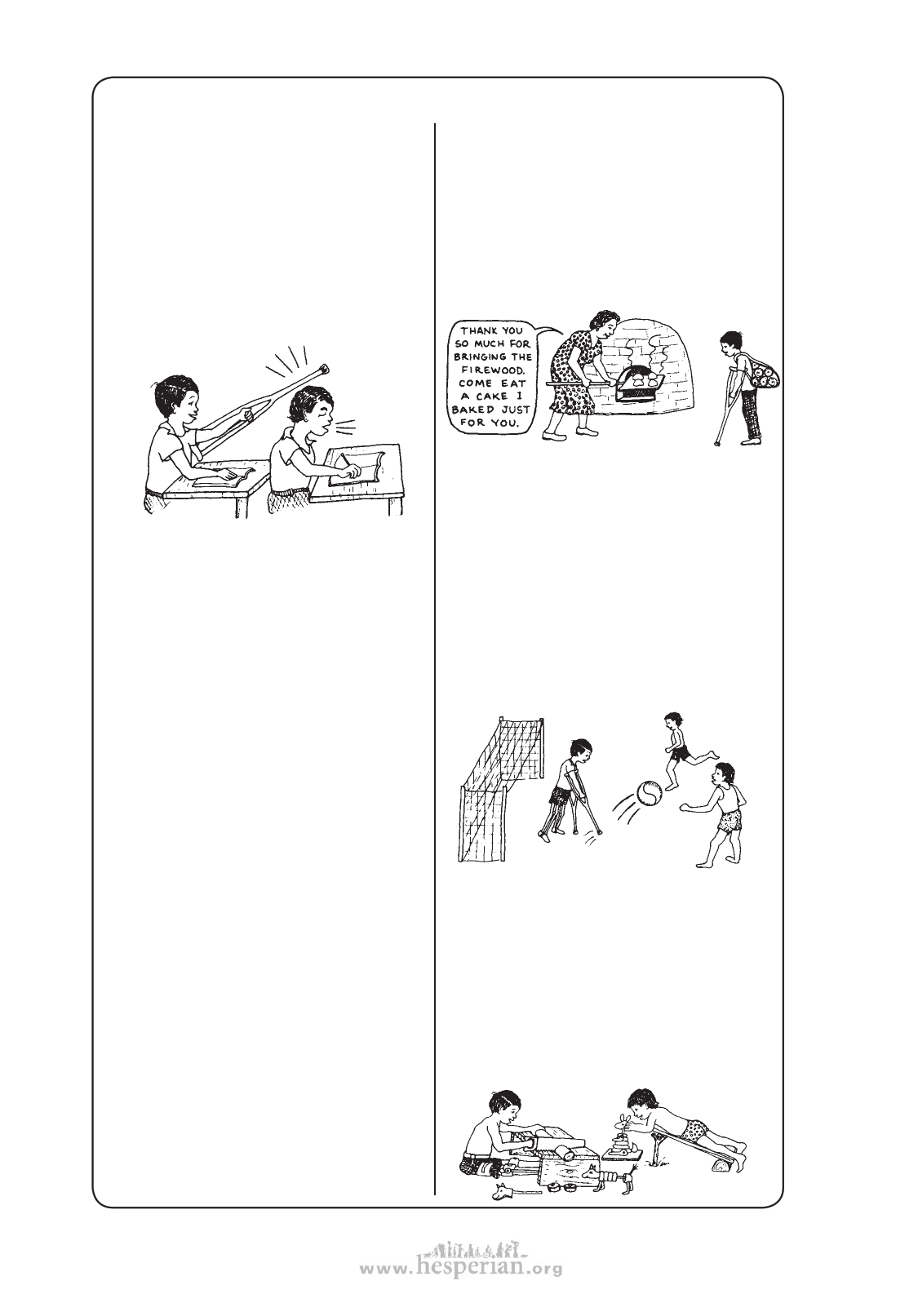
356 chapter 40
THE STORY OF JORGE
Jorge is an intelligent 10-year-old
whose legs are paralyzed by polio. He
lives with his grandmother. He is noisy,
rude, bad tempered, and whenever he
plays with other children, it turns into a
fight. Jorge has caused so much trouble
in the classroom that his teacher recently
told his grandmother he will throw Jorge
out of school if he does not change. Both
his teacher and grandmother have tried
scolding him and whipping him, but it only
seems to make Jorge’s behavior worse. As
his grandmother says, “He loves to make
people angry at him.”
At home, grandma began to look for
things Jorge could do to help her, and to
show him how happy she was when he
did them. She made a backpack, open
at the sides, so that he could help bring
firewood. Also, she learned to quietly
turn her back when he misbehaved,
and to let him know how happy she
was when he would sit quietly doing his
homework or shelling the maize.
Not long ago, Jorge’s grandmother took
him to the village rehabilitation center to ask
for advice. A village worker helped her to
observe both Jorge’s and her own behavior
more closely to better understand why
Jorge acts the way he does. She realized:
• When Jorge is quiet and well-behaved
(which is not often), everyone ignores
or forgets him.
• As a result, Jorye feels unwanted,
unloved, and useless. Starved for
emotional human contact, he gets it
by making people angry with him.
• Jorge’s bad behavior, therefore, brings
him a lot of person-to-person contact,
even though it is painful. The few
times he tries to be good, he is made
to feel unwanted and unneeded.
“I really do love him,” said his
grandmother. “But I guess I don’t show it
much. He makes me worry so much!”
To begin to behave better, Jorge needed
to find out that friendly and helpful behavior
can bring him closer to people than bad
behavior. For this reason, the village
worker—together with the grandmother,
the schoolteacher, the schoolchildren, the
rehabilitation team, and Jorge himself—
helped figure out ways that would let the
boy see that ‘good’ behavior is better than
‘bad’ behavior.
At school, the teacher discussed with
the other children ways to include Jorge
in their games. When they all played
football (soccer), they let him be ‘goalie’.
To everyone’s surprise, Jorge was an
excellent goalie. With his crutches he
could reach farther and hit the ball farther
than anyone else. Soon all the children
wanted Jorge to play on ‘their team’. At
first Jorge started a few fights. But when
he did, he was quietly asked to sit on the
sideline. Soon he learned to stop hitting
other children so that he could keep
hitting the ball.
In the village rehabilitation center,
the village worker invited Jorge to help
make educational toys for young and
disabled children. He helped Jorge get
started and praised him for each toy
Jorge completed. Soon Jorge learned to
make the toys by himself and took great
pride in his work. When he saw other
disabled children playing and learning
things with his toys, it made him very
happy. He decided he wants to be a
rehabilitation worker when he grows up.
Disabled village Children